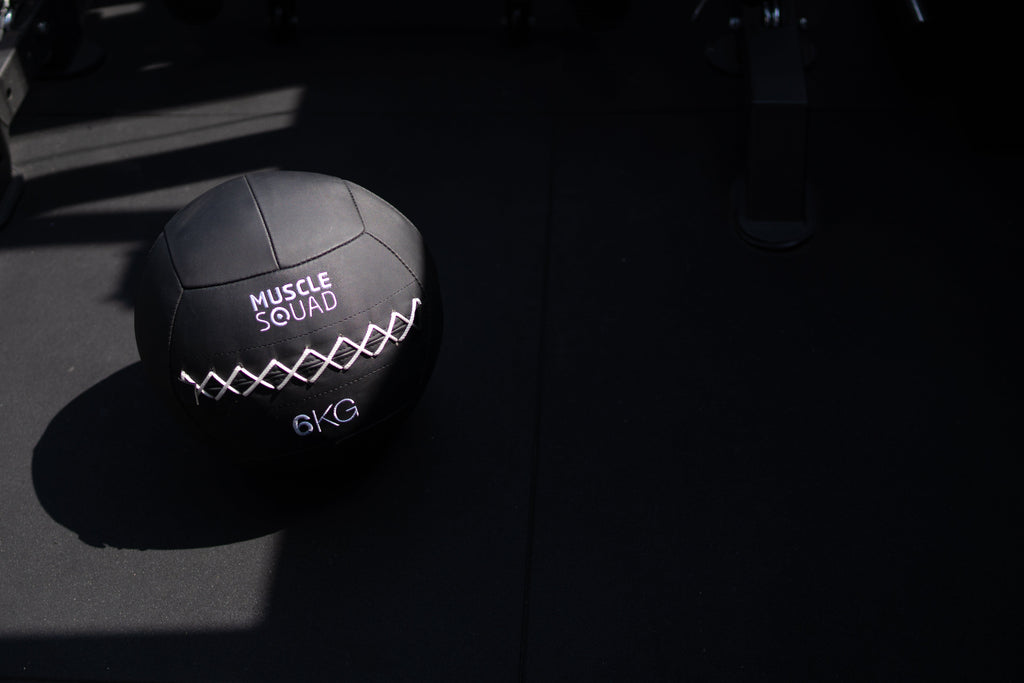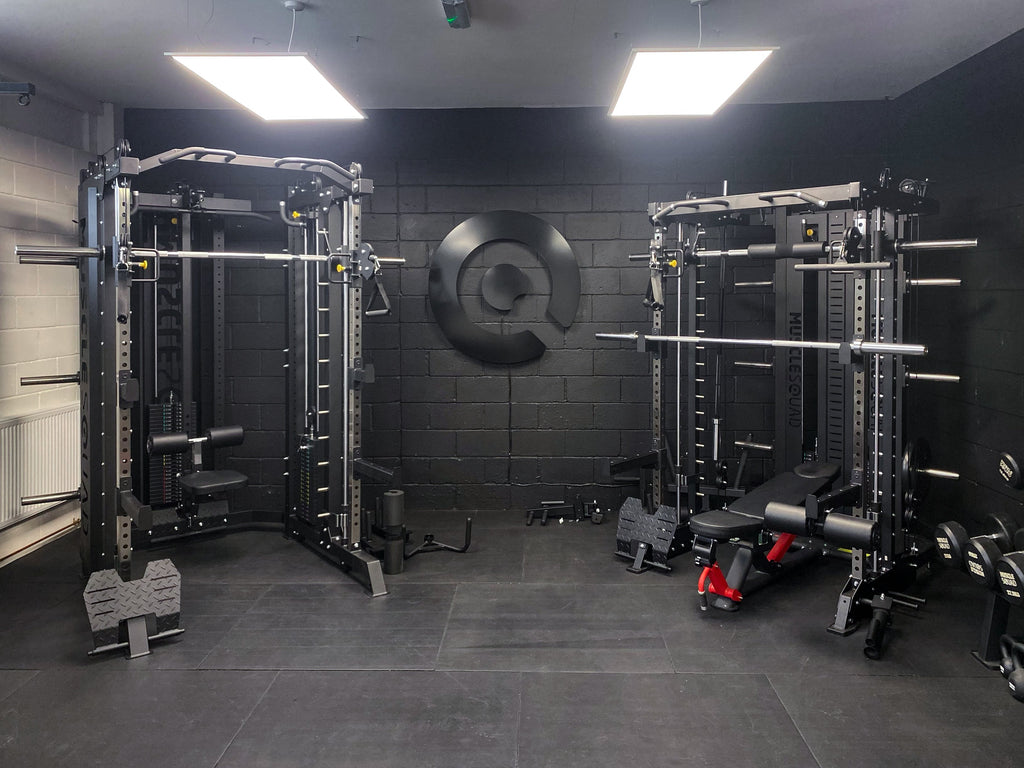If you’re new to fitness and weightlifting, knowing what weight to use can be difficult. This decision is made even harder when purchasing weights for the first time. It’s different to going to your local gym and being able to choose from a large selection of weights until you find which ones are suitable.
We understand. You don’t want to waste your money. You’re imagining your shiny new dumbbells arriving at your door, but to your horror, you’re unable to lift them off the ground.
Hopefully this guide will ease any doubts in your mind. You’ll have a set of new dumbbells heading your way and you’ll be able to set off on your fitness journey.

What weight dumbbells should I use?
Your body naturally has some muscles which are larger than others. For example, your legs are going to be much stronger than your arms as they have a greater surface area. This means that, if you want to build strength throughout your whole body, you’ll need dumbbells in a different weight ranges to get started.
Don’t worry, this is simpler than it sounds.
Heavy Dumbbell Set
First, you’ll need a heavy set of dumbbells for leg exercises.
There is a great selection of dumbbell-based leg exercises. To hit the quads/thighs and glutes, the Bulgarian split-squat and the goblet squat are easy to execute and effective exercises to build leg strength.
For your hamstrings, the dumbbell Romanian deadlift is available. The weighted glute bridge can also be executed with a dumbbell to target your glutes and lower back.
Finally, weighted calf raises can be performed with dumbbells to grow your calves. All of these exercises require a heavy set of dumbbells to ensure maximum results.
Medium Dumbbell Set
Secondly, a medium set of dumbbells is needed to perform most upper-body exercises.
For the chest, dumbbell bench press is a staple in most bodybuilders’ workouts alongside the dumbbell fly. For shoulders, the dumbbell shoulder press is essential for building both size and strength.
Dumbbell rows and pullovers provide excellent alternatives to traditional cable/barbell exercises in terms of working your back muscles. You really can't underestimate how versatile a pair of dumbbells is!
Light Dumbbell Set
Lastly, a light set of dumbbells allow you to hit isolation exercises that will strengthen the smaller muscles in your body.
Your biceps need intense training with a light weight and high reps in order to grow. Try some regular and hammer curl variations to see which you enjoy the most, whether they be seated, standing or concentration curls. As long as you're performing at least some regular and hammer curl exercises, your biceps will grow.
To build width in the shoulders, you'll need to perform lateral raises to target your lateral delts. These can only really be trained with a lighter weight as form is everything in this movement.
And to work your triceps—the muscle that makes up about 2/3 of your arm's size—you should look to tricep kickbacks or overhead tricep extensions to give these muscles a burn.
How to choose the right dumbbell weight
A 1 litre water bottle weighs approximately 1kg, so fill one up at home and see how heavy it feels. Do a few bicep curls and lateral raises with it. If you feel like this is heavy enough to do about 10-12 reps before reaching fatigue, then a 1kg or 2kg set of dumbbells seem perfect for your ‘light’ set. If this felt too easy, fill a 5l watering can up to imitate a 5kg weight. Alternatively, put a bunch of water bottles in a bag following the same principle of 1l = 1kg.
For your medium set, use that same bag of several water bottles to see how you fare lifting ~5kg. Can you lift it above your head with one hand? Do some rowing movements with it. Is it easy or slightly too hard?
Obviously, this isn’t the most scientific way of testing your strength, but with no equipment lifting household objects and seeing how heavy they are is the most practical way to gauge what weight of dumbbells you should get.
Generally speaking, your medium set of dumbbells should be slightly more than double the weight of your light set. Your heavy set of dumbbells should be roughly 50% heavier than your medium set.
For example, if you needed a 5kg pair of dumbbells for your light set to perform arm exercises, your medium set for upper body exercises would be around 10-12.5kg. Based on this, your heavy set of dumbbells for leg exercises should weigh between 15-20kg.

MuscleSquad Dumbbells
We stock several different types of dumbbells. Depending on the weight and purpose, some types of dumbbells are more suitable than others. It mainly comes down to personal preference and experience level.
Neoprene Dumbbells
Our neoprene dumbbells range from 1-10kg, which is a perfect weight for your light and/or medium set. Neoprene dumbbells are great for beginners due to their low price point and all-round versatility.
Hex Dumbbells
We have a huge selection of hex dumbbells ranging from 1-50kg. Depending on the weight you need, hex dumbbells are suitable for beginners and advanced trainees alike. They are very durable and are an essential long-term addition to anyone’s gym.
Adjustable Dumbbells
Alternatively, our range of adjustable dumbbells is the perfect solution to the dilemma of not knowing which weight of dumbbell to buy. Each adjustable dumbbell’s weight can be increased or decreased in small increments, meaning they are suitable for a range of experience levels and can also be used for a wide variety of exercises.
Effectively, an adjustable dumbbell is equivalent to multiple dumbbells in one single package. Just one set would be adequate for your entire workout! The only thing to consider is that you can't drop adjustable dumbbells like you can with fixed weights, and they're not quite as sturdy due to having an internal mechanism to look after.
Dumbbell Bench
For maximum results and better workouts, our Adjustable Dumbbell Bench unlocks a wide array of exercises that can be performed with dumbbells, including the ones mentioned in this guide. It's a beginner piece of equipment, so if you're further along in your strength journey then look at our Phase 2, 3 and 4 products in our bench range.
Key Points to Remember when Buying Dumbbells
- For a full workout, you’ll need a light, medium and heavy pair of dumbbells.
- To get a feel for what weight you need, pick up some household objects and see how much they weigh.
- Your medium set should be about double the weight of your light set, and your heavy set should weigh ~50% more than your medium set.
- Choose from our selection of neoprene, hex and adjustable dumbbells, depending on your preferences.

 Nov 11, 2021 - Jamie Grover
Nov 11, 2021 - Jamie Grover







Leave a comment: